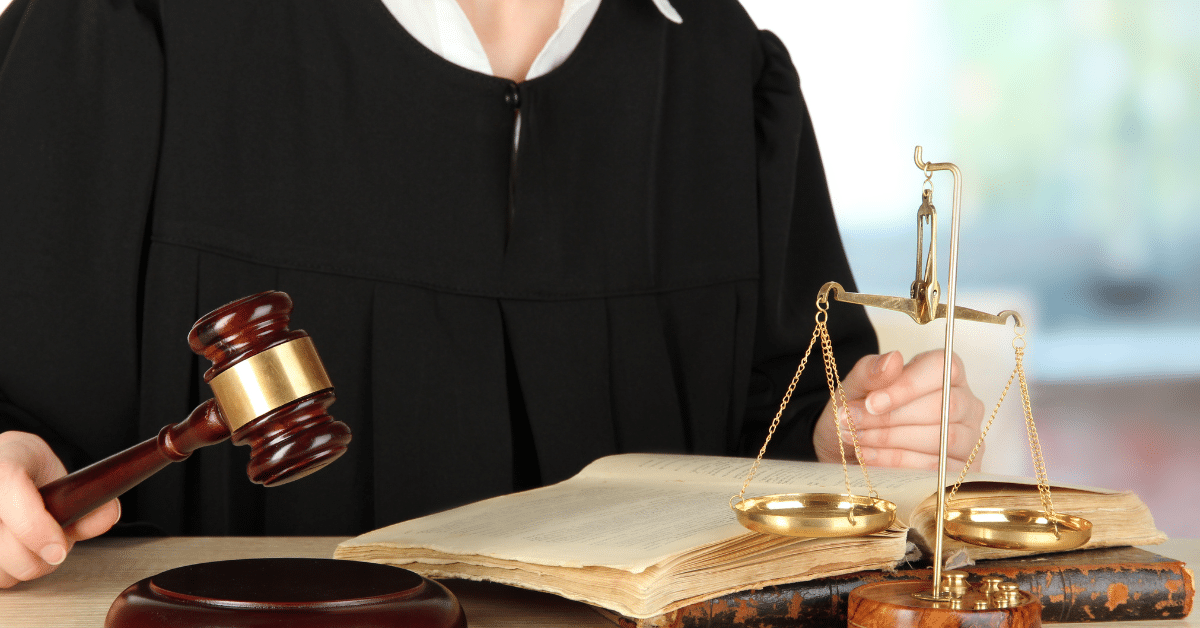
introduction:
Ever wonder what happens after you’re arrested and charged with a crime? The legal process that determines the outcome of your case is called disposition. Disposition refers to the resolution of a criminal case through dismissal, plea deal, trial, or other means. If you’ve been charged with a crime, the disposition of your case will have a huge impact on your life. You’ll want to understand how the process works and the possible outcomes so you can make the best choices for your situation. This article will walk you through the basics of disposition in the legal system so you can go in with your eyes open. Buckle up, you’re about to get a crash course in criminal law procedure.
What Is Disposition in Law?
Disposition refers to the final settlement of a civil or criminal case. In legal terms, it means the case has been resolved in some manner and is closed.
How Does Disposition Happen?
There are a few ways a case can be disposed:
- Dismissal – The case is dismissed by the court, often due to lack of evidence or jurisdiction. Charges are dropped and the defendant is free to go.
- Settlement – The parties involved reach an agreement to resolve the case outside of court. This could be through mediation, negotiation, or arbitration. Settlements often involve the defendant admitting no wrongdoing.
- Trial – The case goes to trial and is decided by a judge or jury. If found liable or guilty, the defendant may face penalties like fines, probation, community service, or jail time.
- Plea deal – The defendant pleads guilty to a lesser charge in exchange for other charges being dropped. The plea deal is negotiated with the prosecution and accepted by the court.
The disposition of a case provides closure and determines the outcome and punishment, if any. The time frame for disposition depends on the complexity of the case and court procedures. While waiting for disposition, the defendant’s life and future remain in limbo.
Justice delayed is justice denied. So an efficient disposition process that provides fair judgment and closure in a timely manner is an important part of any fair and equitable legal system. The road to disposition may be long, but its resolution provides answers and allows all parties involved to move forward.
Key Steps in the Disposition Process
So you’ve started a legal case and now it’s time to wrap things up – this is where the disposition process comes in. This is the stage where a final settlement or judgment is reached to conclude the case. There are a few key steps to keep in mind:
1. Negotiation
This is where you and the other party try to come to an agreement to settle the case out of court. If an agreement is reached, it’s put in writing in a settlement document. You’ll both sign off on the terms and the case is dismissed. This avoids the time and expense of going to trial.
2. Mediation
If you can’t agree in negotiation, mediation with a third party can help facilitate a resolution. A mediator will work with both sides to come to a compromise and draft a settlement. Mediation is confidential and non-binding but often successful.
3. Pleading
If all else fails, you proceed to the pleading stage where you submit written statements defending your position to the court. This includes documents like complaints, answers, counterclaims and replies. Pleadings lay out the issues and positions of both sides.
4. Discovery
Next comes the discovery process where evidence is exchanged between parties. This includes interrogatories (written questions), requests for production of documents, depositions, etc. Discovery allows both sides to know the strengths and weaknesses of the other’s case before trial.
5. Trial
Finally, if no settlement is reached the case proceeds to trial. A judge or jury will hear arguments, review evidence and testimony, and ultimately render a verdict and judgment to conclude the case.
The disposition process can be complicated but understanding the key steps will help you navigate it effectively. With patience and perseverance, you can achieve a just result.
Types of Dispositions in Legal Cases
There are several types of dispositions that can occur in legal cases. The most common are:

Settlement
A settlement is an agreement between the parties to resolve the case without a trial. Both sides negotiate until they reach a compromise. This is ideal since it avoids the time and expense of litigation. Settlements can happen at any point before a final judgment is made.
Dismissal
A dismissal results in the termination of a case. It can happen for several reasons, such as:
- Lack of jurisdiction – The court lacks the authority to hear the case.
- Failure to state a claim – The plaintiff fails to allege facts that constitute a viable legal claim.
- Lack of prosecution – The plaintiff abandons the case by not moving it forward.
- Mootness – Circumstances have changed so the issue is no longer relevant or contested.
Dismissals allow defendants to avoid litigation but plaintiffs can potentially refile the case to correct issues.
Default Judgment
If the defendant fails to respond or defend themselves in a case, the court may enter a default judgment against them. This means the plaintiff wins automatically without a trial. Defendants who default give up their right to contest the plaintiff’s claims and allegations.
Consent Judgment
Both parties agree to allow the court to enter a judgment to resolve the case. Like a settlement, this avoids trial but has the added force of a court order. Consent judgments outline the terms the parties have agreed to.
Summary Judgment
Before a trial, either party can ask the court to make a summary judgment – a ruling on the merits of the case based on evidence submitted. If granted, it resolves the case in favor of the party that requested it. Summary judgments weed out cases where no genuine issues of material fact exist, so a trial is unnecessary.
In the end, most legal disputes are resolved through settlements, dismissals, or default judgments. While trials draw more attention, they are less common in reality. The disposition process aims to resolve cases efficiently while balancing fairness to both sides.
Factors That Influence Disposition Decisions
There are several factors that influence how a case will be disposed of, including:
Severity of the Offense
The more serious the offense, the less likely diversion or dismissal will be considered. Judges and prosecutors have to weigh the severity of the crime against the background and circumstances of the defendant. For minor, non-violent offenses, especially for first-time offenders, alternative dispositions like diversion programs are more probable.
Defendant’s Background
A defendant’s background, criminal history, personal circumstances, and willingness to take responsibility for their actions are all taken into account. Someone with no prior record who shows remorse has a better chance of a lenient disposition than a repeat offender. The judge and prosecutor will consider things like the defendant’s age, mental health, addiction issues, and willingness to get treatment.
Strength of the Evidence
The amount and type of evidence against the defendant is a key factor. If there are witness statements, DNA, video or other irrefutable evidence, the prosecution has a strong case and may be less likely to consider dropping or reducing charges. Weaker evidence may lead the prosecution to make a plea deal to avoid losing at trial. They have to weigh the likelihood of getting a conviction against the benefits of a plea agreement.
Victim’s Wishes
For offenses against a person or their property, the victim’s opinion may impact the disposition. If a victim requests that charges be dropped or is willing to accept an apology and restitution, the judge and prosecutor may take that into consideration, especially for minor offenses. However, for violent crimes or felonies, the victim’s wishes are not the only factor, and the interests of public safety and justice still apply.
Availability of Diversion Programs
If there are limited options for diversion, treatment or alternative dispositions in the jurisdiction, the judge and prosecutor’s hands may be tied regarding the disposition they can offer, even if they believe it may be appropriate and helpful for the defendant. The availability of resources in the local criminal justice system plays a role.
How Disposition Impacts the Parties Involved
The disposition of a legal case impacts all parties involved, regardless of the outcome. For the plaintiff, the person who initiated the lawsuit, a favorable disposition means their grievance has been addressed and they can find closure. If the case is dismissed or the judgment is unfavorable, the plaintiff risks getting no resolution or compensation.
For the defendant, the person being sued, a dismissal or verdict in their favor allows them to move on from the case without penalty. However, an unfavorable disposition may require them to pay damages, change business practices, or face other consequences. Both parties invest significant time, money, and emotional energy into the legal process, so the final disposition carries major implications.
Disposition also affects attorneys and the legal teams on both sides. A win for their client is a win for them, while a loss may be seen as a failure. The disposition likewise impacts the judge and jury, who invest effort in presiding over and deciding the case. Their ruling shapes the ultimate outcome and resolution of the dispute.
Finally, the disposition of a case can have broader implications on the community and public policy. Landmark cases that are codified into law or spur legislative changes have a lasting impact. Even less prominent cases can influence norms and set informal precedents for how similar situations are handled in the future.
In summary, the disposition of a legal case ripples out to touch all those involved in the process. For better or worse, its effects are far-reaching and long-lasting. While the facts of each case are unique, the quest for justice and resolution is universal. The disposition brings closure, consequence, or change that shapes the parties, community, and sometimes society as a whole.
Conclusion
And there you have it, everything you need to know about the disposition process in law. While the legal terminology and procedures can seem complex, understanding the basics of dispositions and how they work can help demystify this important part of the legal system. Now you can follow along when hearing about dispositions in the news or if you find yourself involved in a case. And if you do end up in court, you’ll feel more at ease knowing what to expect from the disposition process. The law doesn’t have to be an impenetrable maze of jargon and rules. With a little effort to understand the fundamentals, you can become an informed participant in the legal system we all depend on.

